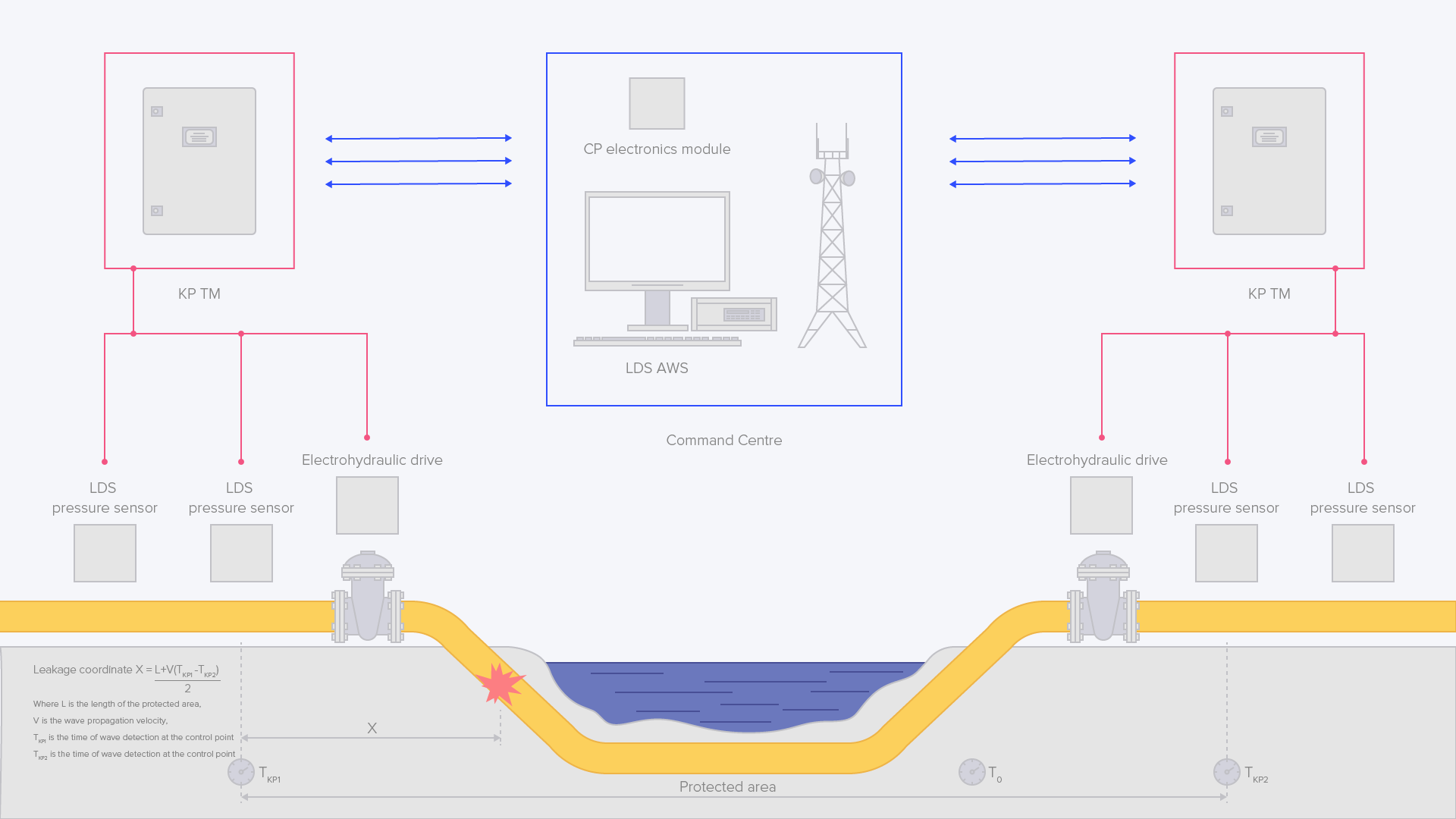Telemechanics
Leak detection system
Leak detection system
The oil pipeline leak detection system (LDS) provides for quick detection of leakage and determines where and when it occurred. Timely detection can significantly reduce the reaction time of emergency services and, as a result, significantly reduce the environmental damage from spillage.
The leak detection system is a software and hardware package that processes information from sensors located on the pipeline in real time to detect leakage as well as pinpointing its time and location.
The system uses several leak detection methods:
- pressure wave analysis
- volumetric balance analysis
- pressure profile analysis
Pressure wave analysis is used for the quick identification of small leaks with high precision.
The concept behind this method is to analyze the propagation of waves of pressure drop in the pipeline. To monitor the pressure waves, the supervised telemechanics station is equipped with two LDS pressure sensors that are connected to the leak detection unit.
The unit analyzes the signals from the sensors, detects the pressure drop waves and determines their direction and transit time. Using a GPS receiver for synchronization makes it possible to record the moment of passage of the wave with great precision. Information about detected waves is delivered to the control point via the telemechanics system. Based on the nature of the wave propagation in the pipeline, the LDS server analyzes the information received and determines that there is a leak, the time of its occurrence, and its exact coordinates.
Volumetric balance analysis and pressure profile analysis are parametric methods. They use information from flow and pressure sensors located on the pipeline and do not require the installation of any additional equipment. These methods make it possible to detect the occurrence and location of medium to large leaks based on analysis of the change in certain technological parameters.
Fields of application
- Condensate pipelines
- Gas pipelines
- Oil pipelines
Signature features:
Extremely low power consumption
The leak detection units are designed for operation in non-volatile systems and have extremely low power consumption
Operation in extreme climates
The GPS receiver used in conjunction with the leak detection unit is designed to operate even in the extreme conditions of the Far North
Increased reliability and elimination of "false" leak detections
The LDS incorporates a special algorithm for confirmation of a leak before triggering an alarm, resulting in increased reliability and the elimination of "false" leak detections
Can be integrated into the linear telemechanics system
The LDS can be integrated into the pipeline’s linear telemechanics system. It is not necessary to set up separate communication channels for data transmission
Collection of measurement data regarding technological parameters
The system provides for the collection and transmission of technological parameter measurement data
Flexible unit placement
Individual units of the Leak Detection System are designed to allow their placement either separately or as expansion modules in telemechanic system controllers
Special software
The LDS includes special software for modeling the operation of the system using given parameters based on historical data
Characteristics
The minimum detectable leakage by pressure wave analysis
5m3/hour.
Error in determination of coordinates by pressure wave analysis
±0.1 km.
Time of leakage detection by pressure wave analysis
1.5 min.
The minimum detectable leakage using parametric method analysis
10m3/hour
Error in determination of coordinates using parametric methods
±2 km.
Time of leakage detection using parametric methods
15 min.
show all Characteristics
How the LDS works

Product order
Contact us

HyperFlow-ASSD
Automated data collection system
Your cart

